Best ERP Software Provider in Australia, Learn more- https://metricserp.com/
Don't wanna be here? Send us removal request.
Text
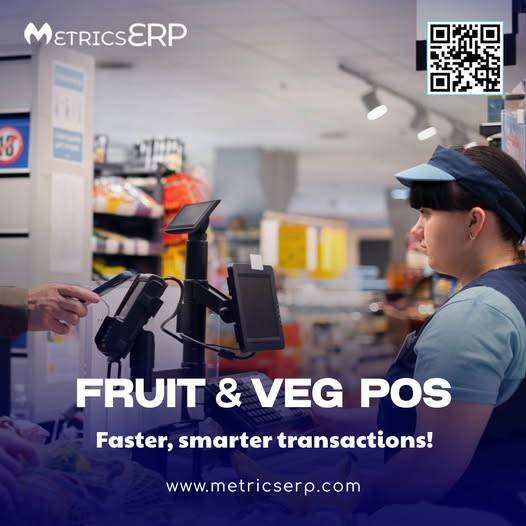

Effortlessly manage your grocery or fresh produce store with MetricsERP’s Fruit & Veg POS System. Our advanced point-of-sale solution ensures faster checkouts, inventory tracking, and seamless transactions – all designed to enhance customer experience and streamline operations.
✔ Speed up checkouts & reduce queues ✔ Track stock to avoid waste ✔ Increase accuracy with automated billing ✔ Seamless integration with existing business operations
Learn More: Fruit and Veg pos system in australia | MetricsERP
0 notes
Text
Why ERP Systems Are Essential for Multi-Location Restaurants
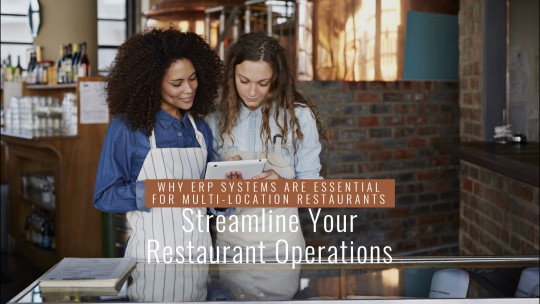
Running a multi-location restaurant chain is like orchestrating a complex symphony. Each location represents a different instrument, and while they play unique roles, they must come together to create harmony. Managing this complexity requires robust tools, and that's where Enterprise Resource Planning (ERP) systems step in. An ERP system isn't just tool—it’s the conductor ensuring that operations, data, and workflows remain in sync. For multi-location restaurants, an ERP system is no longer a luxury but a necessity. Here's why.
1. Centralized Operations for Enhanced Efficiency
One of the most significant challenges for multi-location restaurants is maintaining consistency across outlets. ERP systems enable centralized control, allowing management to oversee operations from a single platform.
Menu Standardization: With an ERP system, you can ensure menu consistency across all locations by centrally managing recipes, pricing, and updates.
Inventory Management: ERP systems provide real-time visibility into stock levels at each location, helping prevent overstocking or stockouts.
Supply Chain Coordination: Centralized purchasing decisions can lead to better vendor relationships and cost savings.
By streamlining these operations, restaurant chains save time and reduce inefficiencies.
2. Real-Time Data and Analytics
The modern restaurant industry thrives on data. ERP systems collect, analyze, and present data from multiple locations in real time, providing actionable insights.
Sales Performance: Track sales trends at individual locations to identify top-performing items or underperforming outlets.
Customer Preferences: Understand what customers love at each location, tailoring promotions and menus accordingly.
Operational Costs: Monitor costs like labor, utilities, and food at every site to optimize spending.
With this level of insight, decision-makers can act quickly and strategic to address challenges or seize opportunities.
3. Simplified Financial Management
Handling finances for one restaurant is challenging enough—doing it for multiple locations can be a logistical nightmare. ERP systems simplify financial management by consolidating data into a single source of truth.
Unified Accounting: Automate accounts payable, receivable, and payroll across all locations.
Compliance: Ensure tax and regulatory compliance for different regions with built-in tools that adapt to local laws.
Budgeting and Forecasting: Use historical data to create accurate financial forecasts and allocate budgets more effectively.
These tools reduce errors, save time, and ensure that financial records remain audit-ready.
4. Improved Employee Management
A multi-location restaurant chain employs a diverse workforce with varying schedules, skills, and roles. ERP systems simplify human resource management by integrating payroll, scheduling, and training.
Centralized Scheduling: Ensure adequate staffing at each location, reducing instances of overstaffing or understaffing.
Performance Tracking: Monitor employee performance and identify training needs to improve service quality.
Labor Cost Optimization: With detailed reports, identify where you can optimize labor costs without compromising operations.
By keeping employees happier and more engaged, an ERP system indirectly improves customer satisfaction as well.
5. Enhanced Customer Experience
For restaurant chains, customer experience is everything. ERP systems provide the tools needed to maintain consistent service across all locations.
Loyalty Programs: Centralize customer loyalty programs, ensuring customers can earn and redeem rewards at any location.
Order Accuracy: Integrated systems ensure orders are consistent, reducing mistakes and customer complaints.
Faster Service: Streamlined processes, from inventory to kitchen workflows, result in faster service times.
A superior customer experience builds loyalty, driving repeat business and increasing profitability.
6. Scalability for Growth
One of the most compelling reasons to invest in an ERP system is its scalability. As your restaurant chain grows, managing operations without an ERP system becomes nearly impossible.
New Location Integration: Easily onboard new outlets without disrupting existing operations.
Adaptability: Modern ERP systems can be customized to suit the specific needs of growing chains.
Future-Proofing: Stay ahead of the competition with tools that adapt to industry trends, like delivery integration or mobile app ordering.
ERP systems give restaurant chains the foundation they need to scale operations smoothly and sustainably.
7. Cost Savings Through Automation
ERP systems automate repetitive tasks, reducing the need for manual intervention and cutting down on errors.
Inventory Automation: Automatic reorder supplies when stock falls below a set threshold.
Accounting Automation: Minimize the time spent on bookkeeping and reduce errors in financial reporting.
Employee Management Automation: Simplify tasks like payroll processing and shift scheduling.
The time and resources saved through automation directly impact the bottom line, making ERP systems a cost-effective investment.
Unlock efficiency with MetricsERP a powerful ERP system for small and medium businesses in Australia. Schedule your free consultation today!
Key Takeaways
For multi-location restaurants, an ERP system acts as the glue that holds the entire operation together. From centralizing operations to enhancing customer experiences, the benefits are both immediate and long-term. With real-time data, simplified financial management, and scalability, ERP systems enable restaurant chains to focus on what they do best—delivering great food and memorable experiences.
If your restaurant chain is ready to grow or simply wants to streamline operations, investing in an ERP system isn’t just a smart choice—it’s an essential one. The restaurant business is competitive, and an ERP system can be the edge you need to stay ahead.
0 notes
Text
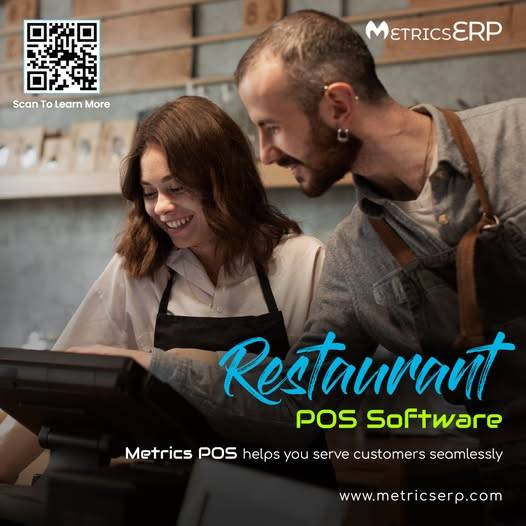
Transform your restaurant operations with MetricsERP’s Restaurant POS Software in Australia. Streamline order management, track inventory, and enhance customer experiences. Perfect for restaurants of all sizes, ensuring efficiency and business growth.
Learn More- POS for Restaurants in Australia, best POS System | MetricsERP
0 notes
Text
How MetricsERP Systems Work: An Overview
For small and medium businesses (SMBs) in Australia, adopting a suitable ERP (Enterprise Resource Planning) system can be transformative. MetricsERP is a prominent solution that combines advanced technology with affordability to help SMBs streamline their operations and scale efficiently. This article provides an in-depth look at how MetricsERP systems work, their core features, and why they are a popular ERP solution for small and medium businesses.
What is MetricsERP?

MetricsERP is an advanced ERP platform designed to simplify business processes by integrating critical functions like finance, inventory, sales, HR, and more into a single unified system. For Australian businesses, MetricsERP offers tailored modules that cater to industry-specific needs while addressing common operational challenges in small and medium enterprises.
Critical Characteristics of MetricsERP:
Integration: Combines multiple business processes into one platform.
Customization: Configurable for industries such as retail, manufacturing, or services.
Scalability: Adapts as businesses grow, making it ideal for ERP for small and medium businesses in Australia.
Cloud and On-Premises Options: Provides flexibility in deployment to suit different business requirements.
How MetricsERP Systems Work
The functionality of MetricsERP revolves around integrating various business processes. Here's a step-by-step breakdown of its workflow:
Centralized Data Management
MetricsERP collects and consolidates data from different departments, like sales, inventory, and HR, into a centralized database. This eliminates silos, ensuring that all teams access consistent, real-time information.
Example: A sales team can view updated inventory levels instantly to confirm stock availability for a customer order.
Automation of Processes
By automating repetitive tasks, MetricsERP minimizes manual intervention and reduces the risk of errors.
Finance: Automates invoicing, tax calculations, and payroll processing.
Inventory: Tracks stock levels, triggers reorder notifications, and manages supplier relationships.
HR: Simplifies recruitment, performance management, and employee payroll.
Real-Time Analytics
MetricsERP employs advanced analytics to provide actionable insights into business operations. Dashboards and reports allow users to track KPIs like sales performance, inventory turnover, and customer satisfaction.
Use Case for SMBs: An Australian retailer can identify its most popular products and focus on stocking them, optimizing profits during peak seasons.
Scalability and Customization
MetricsERP's modular approach allows SMBs to add or modify features as their business evolves. This is particularly beneficial for ERP solutions for small and medium businesses because it grows alongside the organization without overloading users with unnecessary features at the start.
Compliance and Localization
MetricsERP is designed to comply with Australian business regulations, including GST calculations and BAS reporting. Localization ensures that SMBs adhere to industry standards without the need for additional tools.
Key Features of MetricsERP
Inventory Management
Tracks stock in real-time.
Provides alerts for low inventory or overstock.
Integrates with suppliers for streamlined procurement.
Financial Management
Handles accounting, payroll, and tax reporting.
Offers multi-currency support for international transactions.
Customer Relationship Management (CRM)
Centralizes customer data.
Provides insights into customer behavior and preferences.
Human Resources Management
Automates payroll and benefits administration.
Tracks employee performance and training schedules.
Sales and Marketing
Streamlines sales order management.
Supports targeted marketing campaigns through analytics.
Tailored for Local Needs
MetricsERP aligns with Australian tax laws, compliance standards, and market dynamics, making it a practical ERP solution for small and medium businesses in Australia.
Cost-Effective
SMBs often operate on tight budgets. MetricsERP offers affordable pricing plans, ensuring even smaller enterprises can access robust ERP tools without financial strain.
Cloud Accessibility
MetricsERP's cloud-based option enables Australian SMBs to operate remotely, a critical advantage in a post-pandemic world.
Local Support and Training
With a focus on Australian businesses, MetricsERP provides local customer support and training programs to help teams quickly adapt to the system.
Benefits of MetricsERP for Small and Medium Businesses in Australia
Increased Efficiency: Automates repetitive tasks, allowing teams to focus on strategic goals.
Improved Decision-Making: Provides real-time data and analytics for better business decisions.
Scalability: Grows alongside the business without requiring complete system overhauls.
Regulatory Compliance: Simplifies adherence to Australian laws, reducing the risk of fines or penalties.
Conclusion
MetricsERP is a game-changer for small and medium businesses in Australia, offering an affordable and scalable solution for integrating operations. By automating processes and providing actionable insights, it empowers SMBs to focus on growth and profitability.
Suppose you're searching for a reliable ERP solution for small and medium businesses. In that case, MetricsERP stands out as a powerful contender, tailored specifically for the unique needs of the Australian market.
Start your ERP journey today and transform how your business operates!
0 notes
Text
Boost your fruit and vegetable retail operations with MetricsERP's specialised Fruit and Veg POS system in Australia. Tailored to meet the unique needs of the fresh produce market, our POS system enhances efficiency with fast transaction processing, advanced inventory management, and real-time analytics.

Stay ahead of the competition with tools designed to streamline your workflow and improve customer satisfaction. Experience the power of a system built specifically for fruit and vegetable sales complexities. Upgrade to MetricsERP's POS system for the Fruit and Veg Store in Australia and see your business grow. Join other successful retailers and make the switch today!
0 notes
Text
Why MetricsERP is the Ideal Solution for Managing Retail Chains
Managing a retail chain is no easy task. From tracking inventory to maintaining customer satisfaction and ensuring smooth financial operations, the challenges are numerous. Retailers need a comprehensive and integrated solution to streamline these operations—and that’s where MetricsERP comes in.
Let’s dive into why MetricsERP stands out as the best solution for managing retail chains, especially in industries that deal with fast-moving consumer goods and the food service sector.
1. Comprehensive Retail Management Under One Roof

One of the primary advantages of MetricsERP is its ability to unify all business operations on a single platform. Rather than juggling multiple systems for inventory, sales, employee management, and customer service, MetricsERP offers a one-stop solution.
For example, retail chains in the food industry—especially supermarkets offering fresh produce—can greatly benefit from its Fruit and Veg POS system in Australia. This specialized module is designed to handle the complexities of perishable inventory, such as dynamic pricing for fresh products and real-time stock tracking.
Key Features:
Integrated POS system: MetricsERP’s POS system synchronizes sales, inventory, and customer data, allowing you to manage all aspects of the business with ease.
Real-time stock management: For retailers managing fresh produce, knowing exactly what is in stock, what is about to expire, and what needs replenishment is crucial. MetricsERP automates these tasks, reducing waste and increasing efficiency.
Data-driven decisions: Comprehensive dashboards and real-time analytics help you make informed decisions, whether it's adjusting pricing or managing supply chains.
2. Efficient Multi-Location Management

Running multiple retail locations can often feel like herding cats—especially if you’re using outdated systems. MetricsERP makes multi-location management simple by allowing you to monitor inventory, sales, and staff performance across all branches from a single dashboard.
For example, a supermarket chain offering a wide range of fresh fruit and vegetables can use MetricsERP’s centralized platform to ensure consistent pricing, promotions, and inventory across all stores. If one location is running low on stock, the system can trigger alerts or auto-order from suppliers, maintaining smooth operations.
Similarly, restaurant owners can rely on MetricsERP’s Restaurant POS software in Australia to oversee multiple branches, whether you’re running a fine-dining restaurant or a fast-food chain. The software’s streamlined operations allow managers to control every aspect of their business, from staff scheduling to kitchen orders, with ease.
Benefits of Multi-location Management:
Consistency: Ensure that promotions, pricing, and customer service are uniform across all locations.
Real-time updates: Get instant insights into sales performance, stock levels, and employee productivity at each store or restaurant.
Inventory sharing: Easily redistribute stock from one location to another to avoid shortages or overstocking.
3. Tailored for Diverse Retail Environments

MetricsERP understands that no two retail businesses are the same. That’s why the platform is highly customizable, ensuring that it fits the specific needs of your retail model, whether you're running supermarkets, convenience stores, or restaurants.
For instance, supermarkets or grocery stores dealing with fresh produce need a Fruit and Veg POS system that can manage fluctuating prices, ensure stock freshness, and track waste. MetricsERP’s system can be tailored to handle the unique challenges of this niche.
Similarly, the Restaurant POS software in Australia allows foodservice businesses to operate more efficiently. From kitchen order management to table reservations, MetricsERP simplifies operations, ensuring a seamless experience for both staff and customers.
Customizable Features:
Inventory management tailored to perishables: Track expiry dates, automate replenishment, and ensure stock rotation.
Customer loyalty programs: Develop tailored promotions and loyalty programs to reward returning customers.
Kitchen order management: Streamline communication between the front of house and kitchen, reducing order errors and wait times.
4. Enhanced Customer Experience
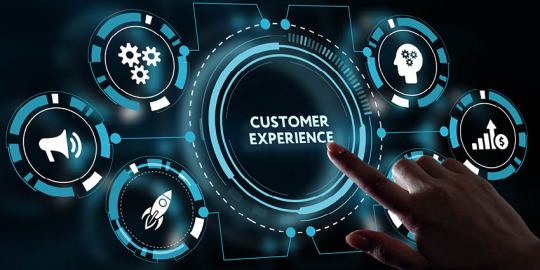
In retail, customer experience is everything. MetricsERP is designed to enhance customer satisfaction through a range of features. Whether it’s ensuring faster checkouts at the grocery store or managing online orders at a restaurant, this ERP system helps you deliver exceptional service.
For supermarkets using the Fruit and Veg POS system in Australia, you can offer promotions and discounts tailored to customer preferences, boosting both sales and customer loyalty. Additionally, the system’s real-time inventory management ensures that customers will always find what they need on the shelves.
For restaurants, the Restaurant POS software in Australia integrates with customer loyalty programs and online ordering systems, making it easy to manage promotions and handle high volumes of orders efficiently. Faster service, fewer errors, and personalized customer interaction can turn first-time visitors into loyal customers.
Enhancing Customer Experience:
Speedy checkout: Reduced wait times and faster service with integrated payment solutions.
Customer loyalty: Build stronger relationships with customers through targeted promotions and loyalty rewards.
Seamless online integration: For restaurants, manage online orders and reservations alongside in-house operations effortlessly.
5. Scalable and Future-Ready

One of the standout features of MetricsERP is its scalability. Whether you're starting with a single store and planning to expand or already managing multiple locations, the software grows with you. This scalability ensures that as your retail chain evolves, the system continues to meet your needs without requiring a costly overhaul.
Furthermore, MetricsERP is future-ready, meaning it can integrate with new technologies as they emerge, such as AI-driven analytics, mobile payment solutions, and advanced CRM systems.
Scalability and Future-Proofing:
Adaptable: Suitable for small businesses aiming to expand or large chains seeking more advanced functionality.
Integration-ready: Ready to work with future technologies and current third-party tools.
Cloud-based: Access the system from anywhere, with real-time updates across all locations.
In conclusion, MetricsERP offers a comprehensive and versatile solution for managing retail chains, from supermarkets to restaurants. With its specialized tools like the Fruit and Veg POS system in Australia and Restaurant POS software in Australia, it helps businesses optimize operations, enhance customer experience, and prepare for future growth. For any retail chain looking to stay competitive in the Australian market, MetricsERP is the solution that checks all the boxes.
0 notes
Text
ERP for Small and Medium Businesses in Australia: A Detailed Overview of MetricsERP
In the fast-evolving business landscape of Australia, small and medium-sized businesses (SMBs) face unique challenges. Whether it’s handling growing customer demands, managing inventories, or simply scaling their operations, these businesses need powerful yet adaptable tools. One such tool that has gained significant traction is ERP (Enterprise Resource Planning) software. For SMBs in Australia, MetricsERP has emerged as a strong contender in the ERP software market, offering a comprehensive solution tailored to the specific needs of this business segment.
What Is an ERP System?
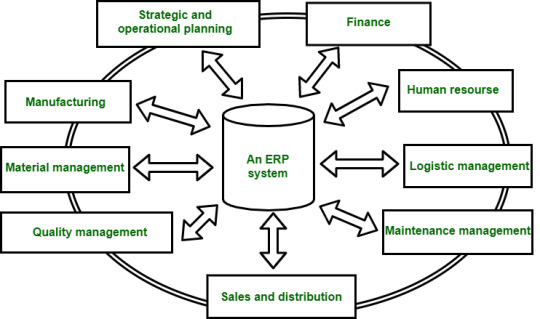
An ERP system integrates all of a company’s core processes into a single platform. From inventory and order management to accounting and human resources, an ERP streamlines operations by allowing different departments to share data easily and work cohesively. This unified approach improves efficiency, reduces operational costs, and enhances data-driven decision-making. But, ERP systems aren't just for large corporations. With advancements in technology, ERP has become more accessible, especially to small and medium-sized businesses (SMBs), which can now leverage the same benefits on a smaller scale.
Why Do SMBs in Australia Need ERP?
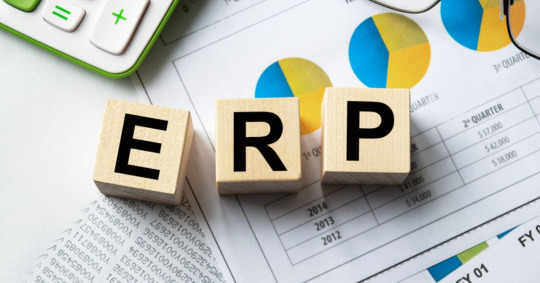
Small and medium-sized businesses in Australia operate in a dynamic environment, characterized by rapid technological change, market competition, and increasing customer expectations. Here’s why ERP systems, such as MetricsERP, are vital for them:
Improved Efficiency: Streamlining operations across departments saves time, minimizes errors, and reduces redundant tasks.
Cost Savings: By automating routine tasks, businesses can save on labor and operational costs.
Enhanced Decision Making: Real-time insights help business owners make informed decisions, from financial planning to inventory management.
Scalability: As SMBs grow, an ERP system can scale alongside them, supporting new business lines, markets, or products.
For Australian SMBs, ERP systems are not just a matter of improving efficiency—they're key to survival and growth in an increasingly competitive marketplace.
Introducing MetricsERP: Tailored for Australian SMBs
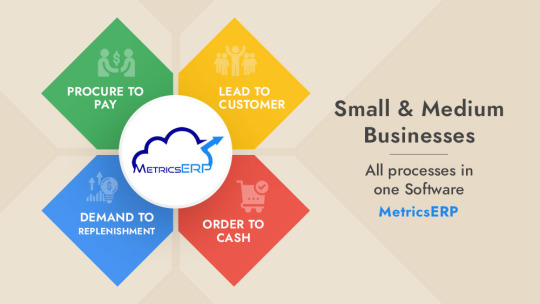
MetricsERP is a full-suite ERP solution designed to cater specifically to the needs of small and medium-sized businesses in Australia. Its customizable features, local support, and scalability make it a perfect fit for companies looking to streamline their operations and foster growth without the complexity often associated with larger ERP systems.
Key Features of MetricsERP
Here are some of the standout features of MetricsERP that make it ideal for Australian SMBs:
1. Inventory and Supply Chain Management
MetricsERP simplifies complex inventory processes, allowing SMBs to manage stock levels in real time, track orders from suppliers, and optimize their supply chain. The system's detailed reporting functions ensure businesses can maintain optimal stock levels, avoid over-purchasing, and reduce stock wastage.
Key benefits: Better stock visibility, real-time data, optimized procurement.
Example: An Australian retail SMB can ensure popular items are always in stock during busy seasons without over-ordering and tying up capital in excessive inventory.
2. Financial Management and Compliance
One of the most critical challenges for SMBs in Australia is keeping on top of their finances while ensuring compliance with local regulations, such as the Australian Taxation Office (ATO) requirements. MetricsERP offers full financial integration with modules for accounting, budgeting, and tax management.
Key benefits: Automated invoicing, real-time financial reporting, and seamless compliance with ATO standards.
Example: A construction business in Sydney can automate GST reporting and easily generate financial statements to monitor cash flow and profits.
3. Customer Relationship Management (CRM)
Keeping track of customers and potential leads is essential for SMBs. MetricsERP includes a robust CRM system that helps businesses manage customer relationships, sales pipelines, and marketing efforts. The CRM feature integrates seamlessly with other modules, providing a unified view of customer data.
Key benefits: Improved customer satisfaction, better sales tracking, and personalized marketing.
Example: A local e-commerce business can use the CRM to follow up with customers after sales, offer tailored promotions, and build customer loyalty.
4. Human Resource Management
MetricsERP also includes a human resource (HR) module, making it easier for businesses to manage their employees. Features like payroll management, time tracking, and employee self-service portals empower SMBs to streamline their HR functions without needing a dedicated team.
Key benefits: Simplified payroll, better employee engagement, and compliance with Australian labor laws.
Example: A growing café chain can use the HR module to handle rostering, calculate overtime, and ensure staff are paid accurately and on time.
Why MetricsERP Stands Out for SMBs in Australia
1. Localization and Australian Support
MetricsERP offers localized support, meaning businesses don’t need to worry about long wait times for help or navigating a system built for foreign markets. It is designed specifically with Australian businesses in mind, from compliance to the peculiarities of the local market.
2. Scalability for Growing Businesses
Unlike rigid systems that require costly upgrades, MetricsERP is built to scale with the business. As a small business grows, MetricsERP can handle more users, more data, and more complex processes without a complete system overhaul.
3. Cost-Effective
ERP systems are notorious for their high upfront costs, but MetricsERP offers affordable pricing plans that make it accessible to even the smallest businesses. The cloud-based nature of the platform also eliminates the need for hefty hardware investments.
4. User-Friendly Interface
Many ERP systems are criticized for being overly complex, but MetricsERP has invested in creating an intuitive, easy-to-use interface. This reduces the learning curve, making it accessible to non-technical staff.
How to Implement MetricsERP for Your Business
Implementing MetricsERP involves several steps, which ensure smooth adoption and minimum disruption to your business:
Needs Assessment: Evaluate your business processes to determine which MetricsERP modules will best address your needs.
Customization: MetricsERP allows for extensive customization, ensuring the software fits your business, not the other way around.
Training: MetricsERP provides training sessions to help employees get comfortable with the system.
Go Live: Once the system is in place and employees are trained, MetricsERP goes live, transforming how the business operates.
Conclusion: Empowering Australian SMBs with MetricsERP
ERP For small and medium businesses in Australia, MetricsERP offers a lifeline to better efficiency, scalability, and profitability. With features tailored specifically to the Australian market, including localized support and compliance, MetricsERP stands out as an affordable and powerful solution. Whether it’s managing finances, streamlining HR processes, or optimizing inventory, MetricsERP provides SMBs the tools they need to compete in today’s fast-paced world. If you’re a business owner in Australia, it might be time to consider how MetricsERP can transform your business and set you up for sustained growth.
0 notes
Text
Why MetricsERP is the Best ERP Solution for Australian Businesses

Enterprise Resource Planning (ERP) systems have become essential for businesses looking to streamline their operations, improve decision-making, and enhance overall efficiency. For Australian businesses, MetricsERP has emerged as a top contender in the ERP marketplace. But what makes MetricsERP stand out from the competition? Below, we delve into why MetricsERP is the best ERP solution for Australian businesses.
1. Tailored to the Australian Market
Unlike many ERP systems that offer generic solutions, MetricsERP is uniquely designed with the specific needs of Australian businesses in mind. From local compliance to tax regulations, MetricsERP integrates seamlessly with Australian standards. This allows businesses to focus on their growth and operations without worrying about adapting to complex, foreign ERP configurations.
Key Benefits for Australian Businesses:
GST compliance is automated, ensuring that financial reports align with Australian tax regulations.
The system supports multi-currency operations, essential for businesses dealing with international trade.
MetricsERP is attuned to Australian payroll requirements, ensuring that companies remain compliant with wage laws, superannuation, and reporting mandates.
2. Scalability for All Business Sizes
One of the standout features of MetricsERP is its scalability. Whether you’re a small startup or a large enterprise, MetricsERP can adapt to your specific needs. The system grows with your business, offering modular solutions that can be customized as you expand.
Scalable Features Include:
Customizable modules for finance, supply chain, human resources, and customer relationship management (CRM).
Cloud-based infrastructure, allowing for easy scalability without the need for heavy IT infrastructure investments.
Seamless integration with third-party applications, ensuring that your ERP system evolves alongside your business needs.
For small businesses, this scalability is invaluable because it allows for a cost-effective entry point without sacrificing the future potential to grow and add complexity as necessary.
3. User-Friendly Interface
One of the significant pain points for many ERP solutions is their complexity. MetricsERP stands apart by offering a user-friendly interface that’s intuitive, reducing the learning curve for employees. This means that businesses can get up and running quickly, without spending excessive time on training or dealing with user frustrations.
Ease of Use:
A simple, clean dashboard allows users to easily access vital information and manage operations.
Drag-and-drop features and customizable workflows enable companies to tailor the system to their specific needs.
An integrated mobile app offers real-time access to the system, ensuring that team members can stay connected while on the move, a crucial feature for businesses with distributed teams.
4. Industry-Specific Solutions
One size does not fit all when it comes to ERP solutions, and MetricsERP recognizes this by offering industry-specific modules. Whether you’re in retail, manufacturing, logistics, or services, MetricsERP has tailored solutions to meet the demands of your industry.
Industry-Specific Features:
Retail and e-commerce modules help businesses manage inventory, streamline point-of-sale systems, and optimize customer relationships.
Manufacturing-specific tools include production scheduling, quality management, and supply chain automation, helping to improve efficiency at every step of the process.
For service-based businesses, MetricsERP provides tools for project management, time tracking, and service delivery optimization.
This level of customization ensures that Australian businesses, regardless of their sector, get a solution that fits their exact operational needs.
5. Robust Security and Compliance
In today’s digital age, the importance of security and compliance cannot be overstated. MetricsERP provides state-of-the-art security to protect sensitive business data and ensure compliance with industry standards.
Key Security Features:
Advanced encryption protocols to protect business data from cyber threats.
Regular system updates that include the latest security patches to guard against vulnerabilities.
Compliance with local and international regulations, including data privacy laws such as the Australian Privacy Principles (APPs).
By incorporating these security measures, MetricsERP helps businesses avoid costly data breaches and compliance violations.
6. Excellent Customer Support
The implementation of an ERP system is a significant investment, and having access to reliable customer support is critical for its success. MetricsERP provides exceptional customer service, with dedicated teams based in Australia, ensuring that businesses get the help they need when they need it.
What You Can Expect from MetricsERP Support:
24/7 customer service, with local support teams familiar with the unique needs of Australian businesses.
Extensive training resources, including tutorials, webinars, and personalized training sessions.
Rapid response times and proactive monitoring to address issues before they become critical.
The ability to connect with a support team that understands local market challenges provides an added layer of reassurance for Australian companies using MetricsERP.
7. Cost-Effective Solution
ERP systems can be expensive, but MetricsERP offers a cost-effective solution that doesn’t compromise on quality. The system’s modular design allows businesses to only pay for the features they need, making it accessible for companies of all sizes.
Cost Advantages:
Pay-as-you-go pricing model ensures that businesses can scale their usage and investment in line with their growth.
Minimal upfront costs, thanks to its cloud-based deployment.
Lower long-term IT costs due to reduced hardware, maintenance, and staffing requirements.
This flexibility in pricing is vital for Australian small and medium-sized enterprises (SMEs) looking for an affordable yet robust ERP solution.
Summary
When it comes to choosing an ERP system, Australian businesses have unique needs that go beyond generic, out-of-the-box solutions. MetricsERP has emerged as the best ERP solution for Australian companies by offering a tailored, scalable, and user-friendly platform that meets industry-specific demands, provides top-notch security, and comes with stellar customer support. Whether you're a startup or an established enterprise, MetricsERP offers the tools to streamline your operations, improve efficiency, and drive growth—all while keeping costs manageable.
In short, MetricsERP is the clear choice for Australian businesses looking to stay competitive in today's fast-paced market.
#erp software#erp solution#crmsoftware#inventorymanagement#erpsystem#erp#techinnovation#digitaltransformation
0 notes
Text
How MetricsERP CRM Can Help You Identify High-Value Customers
In the ever-evolving landscape of business, understanding your customers' worth is paramount. The ability to pinpoint high-value customers can significantly impact your revenue, customer retention, and overall growth strategy. MetricsERP CRM emerges as a powerful tool in this quest, offering comprehensive insights and capabilities to identify and nurture your most valuable customers.
The Importance of Identifying High-Value Customers
High-value customers are those who contribute the most to your bottom line. They are loyal, have a higher lifetime value, and often advocate for your brand, attracting more customers. By focusing on these key individuals, businesses can allocate resources more efficiently, tailor marketing efforts, and enhance customer satisfaction.
Features of MetricsERP CRM
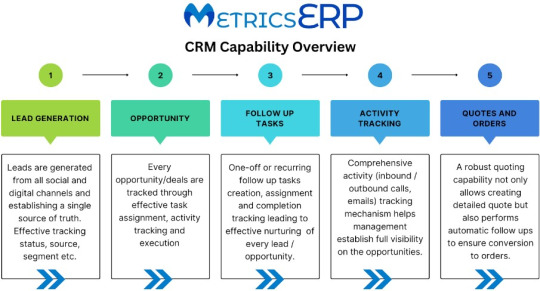
MetricsERP CRM is designed to streamline customer relationship management, providing a suite of tools that help businesses understand and cater to their customers better. Here’s how it can help identify high-value customers:
1. Comprehensive Customer Data Collection
MetricsERP CRM gathers data from various touchpoints, creating a holistic view of each customer. This includes purchase history, browsing behavior, interaction records, and demographic details. With all this information in one place, it’s easier to identify patterns and behaviors indicative of high-value customers.
2. Advanced Analytics and Reporting
The CRM’s advanced analytics tools sift through vast amounts of data to generate actionable insights. Through these insights, businesses can identify customers who consistently make high-value purchases, those who frequently engage with the brand, and those who refer new customers. Customizable reports allow businesses to track these metrics over time, offering a clear picture of customer value.
3. Segmentation and Targeting
MetricsERP CRM allows for precise customer segmentation based on various criteria such as purchase behavior, engagement level, and demographics. By segmenting your customer base, you can identify which groups contribute the most revenue and which have the potential to grow. Targeted marketing campaigns can then be designed to cater to these segments, ensuring that high-value customers receive the attention they deserve.
4. Predictive Modeling
One of the standout features of MetricsERP CRM is its predictive modeling capabilities. By analyzing historical data, the CRM can forecast future customer behavior, identifying those likely to become high-value customers. This proactive approach enables businesses to nurture potential high-value customers early on, maximizing their lifetime value.
5. Customer Lifetime Value Calculation
MetricsERP CRM can calculate the customer lifetime value (CLV) of each customer, providing a clear metric to gauge their worth. By understanding the CLV, businesses can make informed decisions about how much to invest in retaining and nurturing each customer. This calculation takes into account factors such as purchase frequency, average order value, and customer lifespan.
6. Real-Time Monitoring
Real-time monitoring and alerts ensure that businesses are always aware of changes in customer behavior. If a high-value customer shows signs of disengagement, the CRM can trigger alerts for immediate follow-up actions. This ensures that businesses can intervene before it’s too late, maintaining a strong relationship with their most valuable customers.
Implementing MetricsERP CRM for Maximum Impact
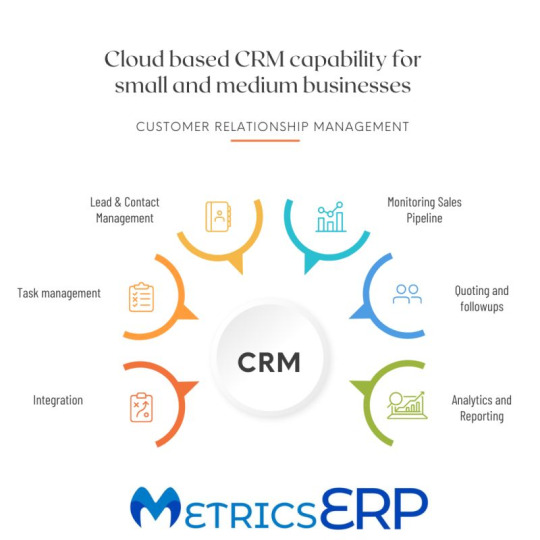
To fully leverage the capabilities of MetricsERP CRM, businesses should follow a structured approach:
1. Data Integration
Integrate all customer data sources into the CRM to ensure a comprehensive view of each customer. This might involve connecting e-commerce platforms, social media channels, and customer service systems.
2. Training and Adoption
Ensure that your team is well-trained on how to use the CRM’s features effectively. Adoption is key to reaping the benefits of any CRM system.
3. Regular Review and Optimization
Regularly review the insights and reports generated by the CRM. Use these insights to refine your strategies and optimize your approach to customer relationship management.
4. Personalization
Utilize the segmentation and targeting features to personalize your interactions with high-value customers. Personalized experiences enhance customer satisfaction and loyalty.
Do you need CRM for Small and Medium Businesses? Book a demo to explore more about how MetricsERP can add value to your business.
Summary
Identifying and nurturing high-value customers is crucial for business success. MetricsERP CRM offers a robust set of tools to help businesses understand their customers better, predict future behaviours, and make data-driven decisions. By leveraging the power of MetricsERP CRM, businesses can ensure that they are focusing their efforts where it matters most, driving growth and profitability.
In the end, the goal is simple: know your customers, value them appropriately, and watch your business thrive. MetricsERP CRM is the key to unlocking this potential, guiding you toward a more strategic and customer-centric approach.
2 notes
·
View notes